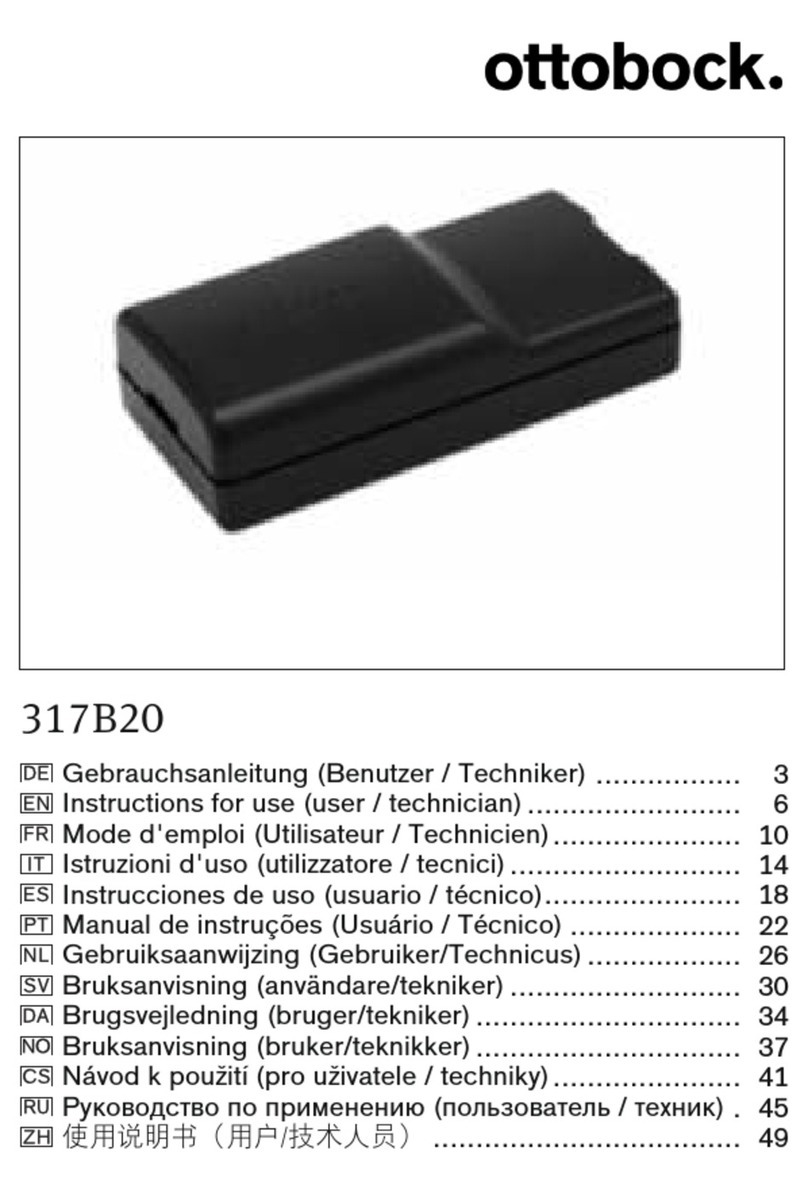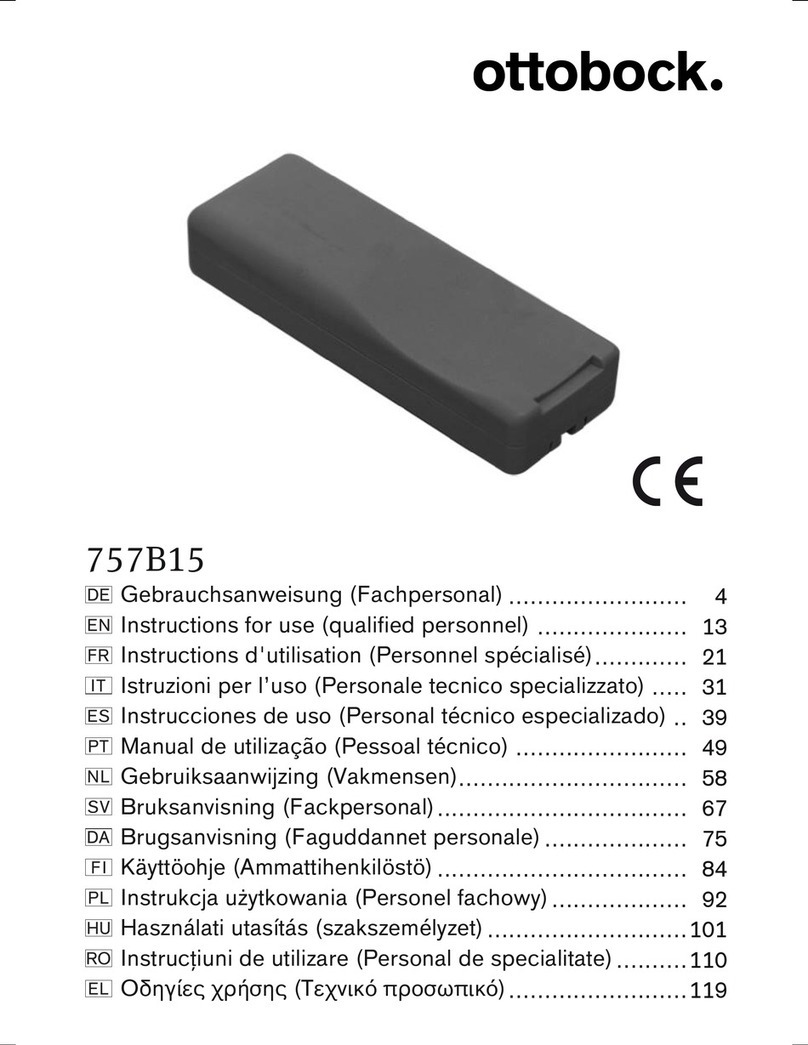
6 | Ottobock
Durch den Einsatz von Plastilin im Bereich der Gießschablone modellie-
ren Sie einen Prolverlauf zum Schaftpositiv. Beschädigen Sie nicht die
Kanten der Gießschablone (Abb. 3). PVA-Folie überziehen und den Außen-
schaft wie üblich gießen. Nach dem Aushärten die sichtbare Prolkante
der Gießschablone plan freischleifen (Abb. 4). Die Flächen links und
rechts vom mittleren Steg der Gießschablone mit einem Schraubendre-
her o.ä. Werkzeug eindrücken (Abb. 5) und die Gießschablone mit einer
Zange entfernen (Abb. 6). Die beiden Elektrodenkabel und das 4-polige
Kabel der Handprothese mit dem Einlegrahmen verbinden (Abb. 7). Den
Einlegrahmen in den Schaft so einsetzen, dass der Rasthebel proximal
positioniert ist. Den Einlegrahmen in den Schaft einschieben (Abb. 8),
danach in den Schaft eindrücken bis der Einlegerahmen bündig am
Schaft auiegt. Durch Eindrehen der beiden Stiftschrauben mit einem
Sechskant-Kugelkopf-Schraubendreher SW 1,5 mm wird der Einlegrah-
men am Schaft xiert (Abb. 9).
Achtung!
Der Einlegrahmen darf nicht mit dem Schaft verklebt werden!
6.2 Einbau in den Unterarm eines Ottobock Ellenbogenpassteiles
(Abb.10 – Abb.11)
Mit Hilfe der Folienschablone die Position des Einlegrahmens festlegen.
Achtung!
Bei einem Ellbogenpassteil mit AFB-Beugehilfe die Mindestdistanz
vom Ellbogengelenk zum Einlegrahmen von 103 mm beachten
bzw. Kollision mit einem Elektro-Dreheinsatz vermeiden (Abb. 10).
Innerhalb des Rahmens der Folienschablone vier Löcher bohren und den
Platz für den Einlegrahmen aussägen (Abb. 11).
Die beiden Elektrodenkabel und das 4-polige Anschlusskabel der Hand-
prothese mit dem Einlegrahmen verbinden (Abb. 7). Den Einlegrahmen in
den Schaft so einsetzen, dass der Rasthebel proximal positioniert ist. Den
Einlegrahmen in den Schaft einschieben (Abb. 8), danach in den Schaft
eindrücken bis der Einlegrahmen bündig am Schaft auiegt.
Durch Eindrehen der beiden Stiftschrauben mit einem Sechskant-Kugel-
kopf-Schraubendreher SW 1,5 mm wird der Einlegrahmen am Schaft
xiert (Abb. 9).































